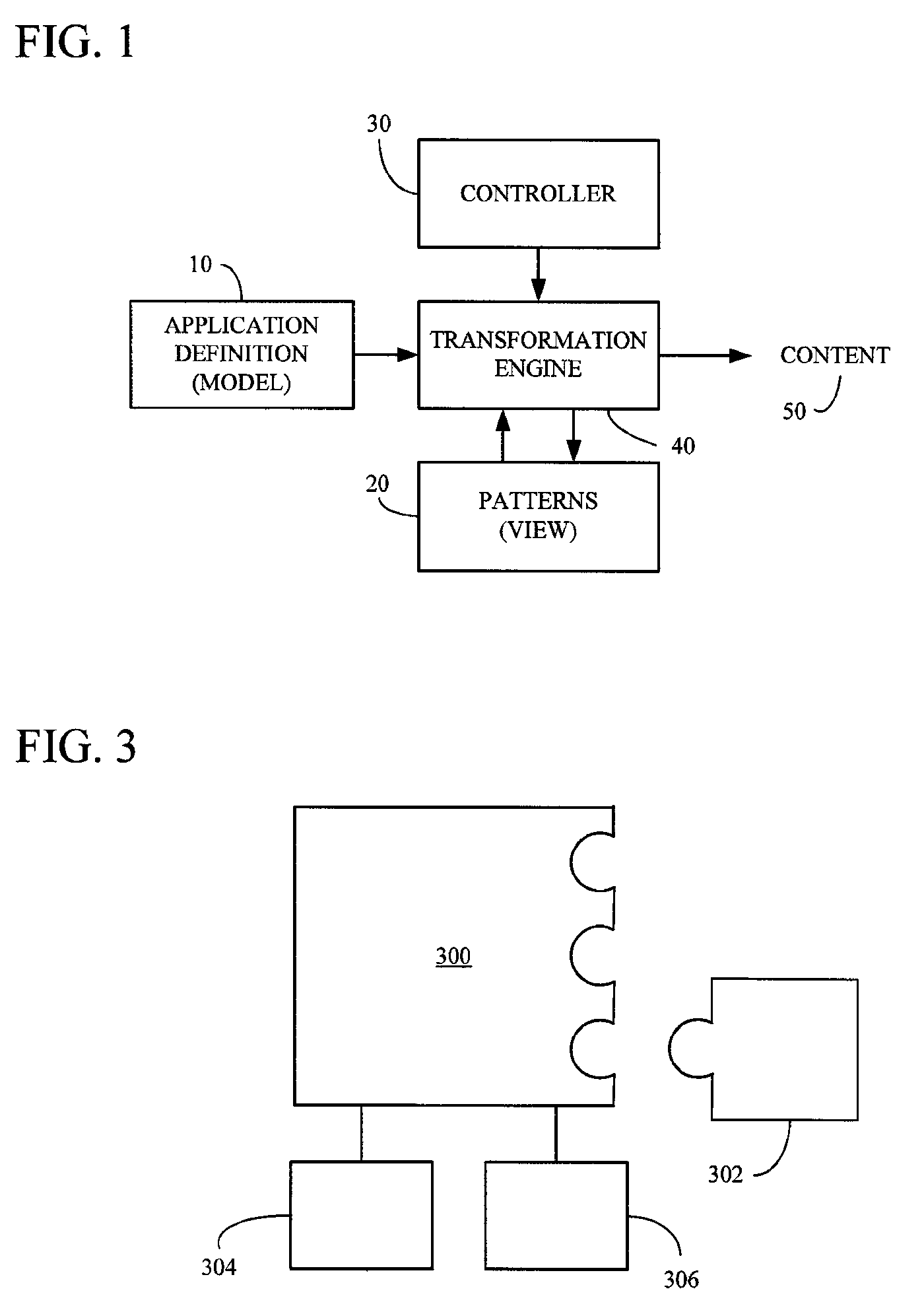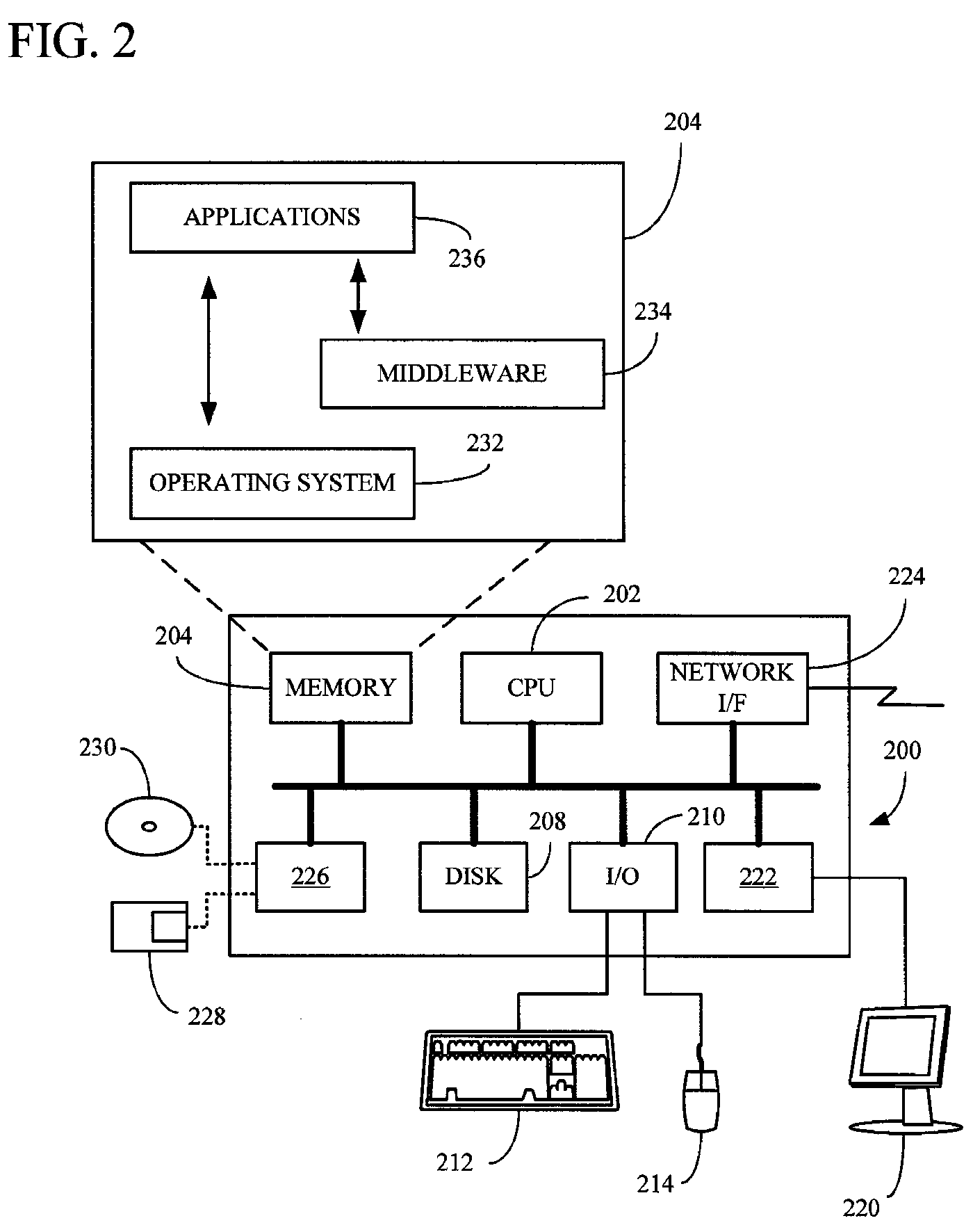Building an open model driven architecture pattern based on exemplars
a model driven architecture and open model technology, applied in the field of data processing systems, can solve problems such as inflexibility of the modeling language or the code generation capability, and the inability to easily express many business problems in uml compliant models
- Summary
- Abstract
- Description
- Claims
- Application Information
AI Technical Summary
Benefits of technology
Problems solved by technology
Method used
Image
Examples
Embodiment Construction
[0018]The preferred embodiment of the present invention implements a model driven architecture that maintains flexibility of expression in each of the descriptive components. The preferred embodiment enables construction of view templates capturing application content and structure from existing application examples that can be used to generate new applications. This process allows capturing of good quality techniques for reuse by other developers.
[0019]FIG. 1 illustrates the component parts of an open model driven content generator for use with the present invention. An application definition 10 is provided that sets forth a model of the problem to be solved. The model is expressed in a descriptive grammar. For example, the model may be expressed in extensible markup language (XML) which includes tags and descriptors for the model. Other forms of expression can be used, however, such as a simple Tag=value specification or through the definition of a set of keywords. An application ...
PUM
 Login to View More
Login to View More Abstract
Description
Claims
Application Information
 Login to View More
Login to View More - R&D
- Intellectual Property
- Life Sciences
- Materials
- Tech Scout
- Unparalleled Data Quality
- Higher Quality Content
- 60% Fewer Hallucinations
Browse by: Latest US Patents, China's latest patents, Technical Efficacy Thesaurus, Application Domain, Technology Topic, Popular Technical Reports.
© 2025 PatSnap. All rights reserved.Legal|Privacy policy|Modern Slavery Act Transparency Statement|Sitemap|About US| Contact US: help@patsnap.com



